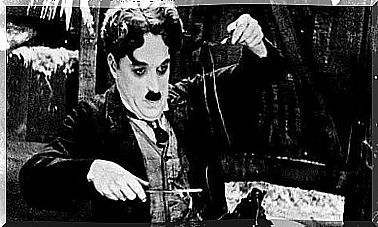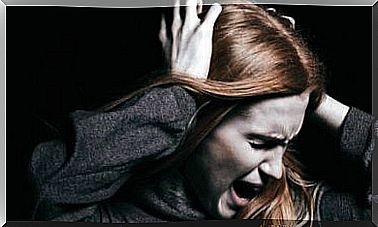Brief Psychotic Disorder: Symptoms And Treatment
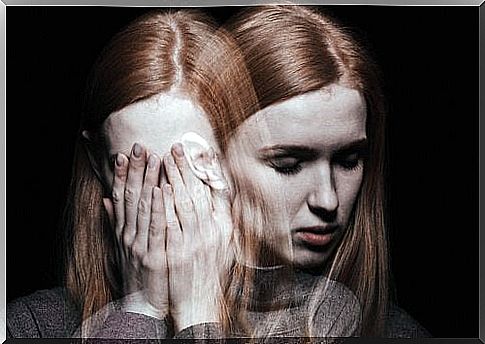
How many times have we said, “This person is crazy”? How is insanity qualified? The existing definitions are many and the points of view on this phenomenon are equally numerous. Let us try to describe it by means of the brief psychotic disorder.
Traditionally in psychiatry, disorders are divided into two main groups: psychotic disorders and neurotic disorders. In general, we could define insanity as a psychotic state.
Psychoses, or psychotic states, involve a loss of contact with reality, manifested through delirium and / or hallucinations. On the contrary, neuroses, or neurotic states, do not involve the loss of contact with reality. Examples of neurotic disorders are depression and anxiety; classic examples of psychosis are schizophrenia and bipolar disorder.
Key elements that define a psychotic disorder: delusions and hallucinations
To better understand the psychotic disorder, including the brief psychotic disorder, it is necessary to start from its manifestations or symptoms. In brief psychotic disorder there are two types of alteration in the perception of reality: delusion and hallucination.
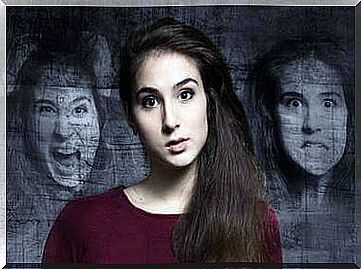
The term delusion refers to a series of erroneous beliefs, which cannot be influenced by real data, by objective evidence against them. Etymologically, the word delirium derives from the Latin term delirāre , ( līra means furrow), therefore “to get out of the furrow”. Applied to thought, it could be equivalent to “thinking outside the normal rut”.
In general terms, delirium means raving, suffering from mental disturbances. In common parlance, delirium is practically synonymous with madness, loss of reason or contact with reality.
Characteristics of delirium
To identify delusion, we need to assess the extent to which the delusional experience satisfies the following conditions:
- It is maintained with absolute conviction.
- It is experienced as an evident truth, beyond the limits of tangible reality.
- He does not allow himself to be changed by reason or experience.
- Its content is often fantastic or at least inherently unlikely.
- Beliefs are not shared by other members of the social or cultural group to which they belong.
- The person is concerned about this belief and finds it difficult to avoid thinking or talking about it.
- Conviction is a source of subjective malaise and interferes with the person’s social relationships and occupations.
In short, delusions are typically very complex from a conceptual point of view and perhaps for this reason it is difficult to enclose them in a definition. A common example of delirium is that in which the person is convinced that he is being spied on or controlled by hidden cameras or the classic example of believing that he is Napoleon or, again, thinking that he has the divine mission to save the world from its destruction.
What is meant by hallucination?
Hallucinations are perceptions that are experienced without the presence of an external stimulus. They are vivid and clear, with all the strength and impact of normal perceptions and are not subject to voluntary control.
Hallucinations can involve any sensory modality, but auditory ones are the most common in brief psychotic disorder and schizophrenia. These hallucinations are usually experienced in the form of voices, known or unknown, perceived as different from one’s own thinking.
A classic example of hallucination is one in which the individual hears a voice prompting him to fulfill a mission. Or see small animals crawling on your arms.
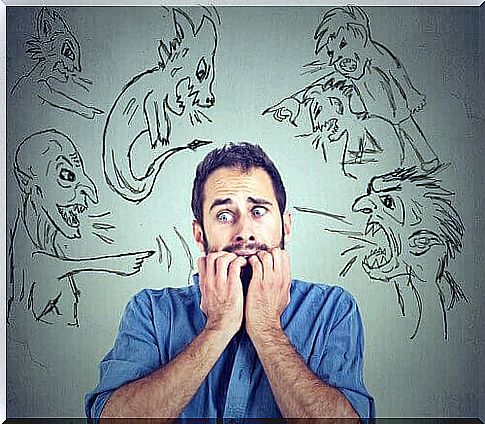
The short psychotic disorder
The essential feature of brief psychotic disorder is an alteration involving the abrupt onset of at least one of the following psychotic symptoms: delirium, hallucinations, disjointed speech or speech, or very abnormal psychomotor behavior, including catatonia.
Catatonia is defined as a neuropsychiatric syndrome characterized by motor abnormalities that occur associated with impaired consciousness, affect and thought disorders. Seizures can occur, but these are more common when the cause is organic. Ultimately (in both organic and psychiatric cases), catatonia is believed to originate from a dysfunction of the lateral orbitofrontal cortex.
The sudden onset of brief psychotic disorder is defined as the transition from a non-psychotic state to a clearly psychotic state within a two-week period. An episode of this type must last for at least one day, but less than a month; at the end, the individual completely returns to the state that preceded the disturbance.
Characteristics of brief psychotic disorder
According to the Diagnostic and Statistical Manual of Mental Disorders (DSM-5), in order to diagnose a brief psychotic illness, the following criteria must be met:
A. Presence of one or more of the following symptoms. At least one of them must be of type (1), (2) or (3):
- Delirium.
- Hallucinations.
- Disorganized speech (disorganized speech).
- Very disorganized or catatonic behavior.
B. The duration of an episode of the disorder must be at least one day but less than a month, with a final return to the level of functioning prior to the crisis.
C. The disorder cannot be better explained by a major depressive or bipolar disorder with psychotic features or another psychotic disorder such as schizophrenia or catatonia, and cannot be attributed to the physiological effects of a substance (e.g., a drug or drug ) or another medical condition.

As we have seen, a person with brief psychotic disorder quickly goes from a normal to a psychotic state, almost without warning. This state of “madness” lasts from one day to a maximum of one month (never more). At the end the person recovers completely.
The differences with schizophrenia are clear. In schizophrenia the continuous signs of the disorder persist for a minimum of six months and usually the transition from “normal” to “insanity” is not so rapid, but more gradual. The course of schizophrenia is usually chronic, while the brief psychotic disorder usually resolves or “heals”.
Although the disorder is short-lived, it can become a serious condition
People with brief psychotic disorder usually experience severe emotional agitation or confusion. There may be rapid shifts from one intense symptom to another. Although the disorder is brief, the degree of dysfunction can be severe over the time period in which symptoms are present.
This condition may require supervision in order to meet the nutritional and hygienic needs of the patient as well as protect him from the consequences of lack of judgment, cognitive dysfunction and delirious actions. On the other hand, during the brief psychotic disorder there appears to be an increased risk of suicidal behavior, especially during the acute episode. In this case it is essential to take safety measures to prevent the person from making self-injurious gestures.
Treatment of brief psychotic disorder
Drug treatment is the main therapy in case of psychosis, but in the initial stage it should not be exclusive. Psychosocial interventions and psychotherapy are very important in the healing process.

These interventions include a series of measures aimed at minimizing the patient’s vulnerability in stressful situations ; the healing process should be facilitated by strengthening family, social and educational-working adaptation and functioning, as well as strengthening the resources necessary to deal with interpersonal or biographical conflicts, problems and tensions.
As we have seen, the brief psychotic disorder can have important consequences for the patient, leading to deterioration of family and personal relationships. This makes the intervention of a qualified professional essential.
Bibliographical references
DSM-5. Diagnostic and Statistical Manual of Mental Disorders



